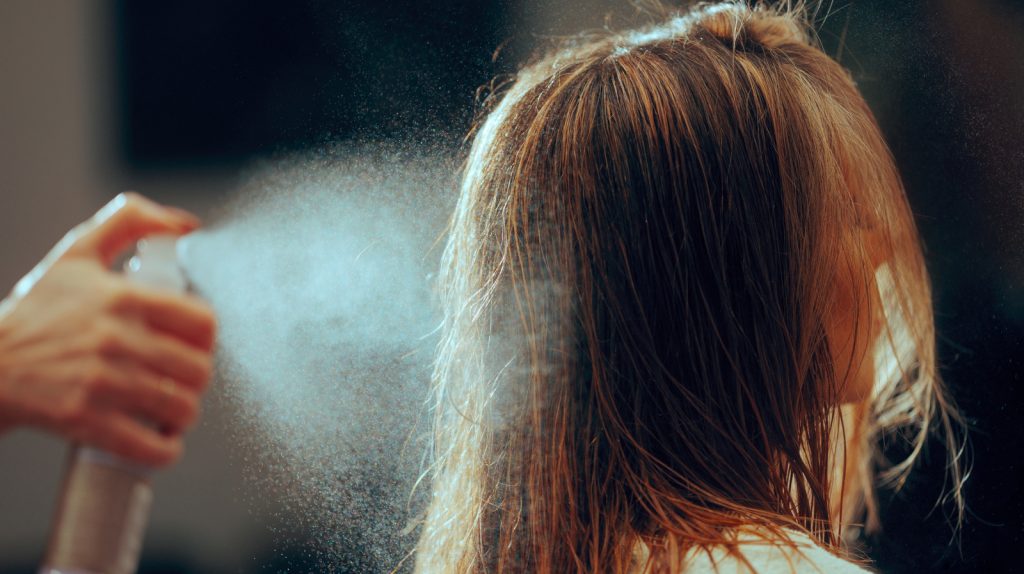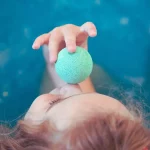Book Appointment Now
Not applying enough heat protectant can set you up for failure
When many of us apply hair protectants, we eyeball the amount, and according to our expert, it’s really easy to under-apply it. “One common mistake is not applying enough product, leaving some strands vulnerable to damage,” Jennifer Korab shares exclusively with Glam. “Always apply in sections and comb through for even distribution.”
Now, we get it — there’s plenty of reason for under-applying, from trying to stretch the product so it lasts longer to fearing your freshly clean hair will end up looking greasy if you use too much. But at the end of the day, if you’re going to use a heat protectant, there’s no point in not using it properly. “When using a spray, lightly mist each section and comb through to ensure even coverage before styling,” Korab explains. And if you’re worried about needing to replace it too quickly, there are plenty of heatless curl methods you won’t need any extra products for — that way, you can cut down on how frequently you have to use a heat protectant.
Using the same heat protectant for all hairstyling tools is another no-no
Most of us see the words “heat protectant” and assume a product is good enough for any source of heat; however, Jennifer Korab explains that there are different types of heat protectant, and paying closer attention to them is crucial in ensuring your locks remain healthy. “Some protectants are designed for blow-drying, while others can handle high heat from flat irons and curling wands, so check the temperature protection level,” Korab explains exclusively to us. “The ideal level of heat protection depends on your hair type and the tool you’re using,” she adds. “In general, it’s best to use a heat protectant that provides protection up to at least 400°F, as most hot tools operate between 350-450°F. If you frequently use high heat, look for a product that specifically protects up to 450°F for the best defense.”
When it comes to specific heat protectants, Korab recommends the Pureology Color Fanatic Leave-In Spray as a great “lightweight, multi-tasking spray” that’s excellent for all hair types, while the Kérastase Nutritive Nectar Thermique Leave-In Cream is a wonderful choice for those who are looking for “more of a rich, creamy heat protectant that deeply nourishes dry or damaged hair,” according to Korab. For more options, check out our list of the best hair protectant sprays to prevent damage.
Not letting the heat protectant dry before applying heat tools is a big problem
Regardless of what heat protectant you’re using, going in with your heat tool immediately after applying it is a major mistake. “A big mistake is not letting the product dry before applying heat, which can cause the hair to sizzle and lead to breakage,” Jennifer Korab shares exclusively with Glam. We get it — you might be in a rush, but try to make a habit of applying heat protectant at an earlier point in your morning or nighttime routine. That way, you can do something else while waiting for it to dry.
“When applying heat protectant, it’s best to do so about 5 to 10 minutes before using any hot tools to allow it to fully absorb and dry,” Korab explains. “For a blow-dry heat protectant, apply it to damp hair and ensure it’s evenly distributed before blow-drying. If using a flat iron or curling wand, make sure the protectant is completely dry before applying heat to avoid damage.” Your hair protectant should have directions written on it (ones that plenty of us are guilty of not reading), so make sure you take a look at those as well.
Layering too many hair products on top of each other? Never a good idea
With so many products advertised to us on a daily basis, it’s difficult to keep our hair-care routines to a minimum. However, if you’re guilty of applying hair serums, oils, and leave-in conditioners in addition to using heat protectants, you should know that they can actually interfere with your heat protectant’s efficiency.
“Layering too many products before heat protectant — especially heavy oils or silicones — can create buildup or even fry the hair when exposed to high temperatures,” Jennifer Korab shares exclusively with us. So, if you know you’re going to use heat, you might want to examine the other products you’re using and even ask your hair professional for help assessing which products you need, especially as many heat protections are also formulated with nourishing ingredients to serve as leave-in conditioners, too.
Now, for more hair-care information, check out the hair tools that cause the most damage to your hair.








